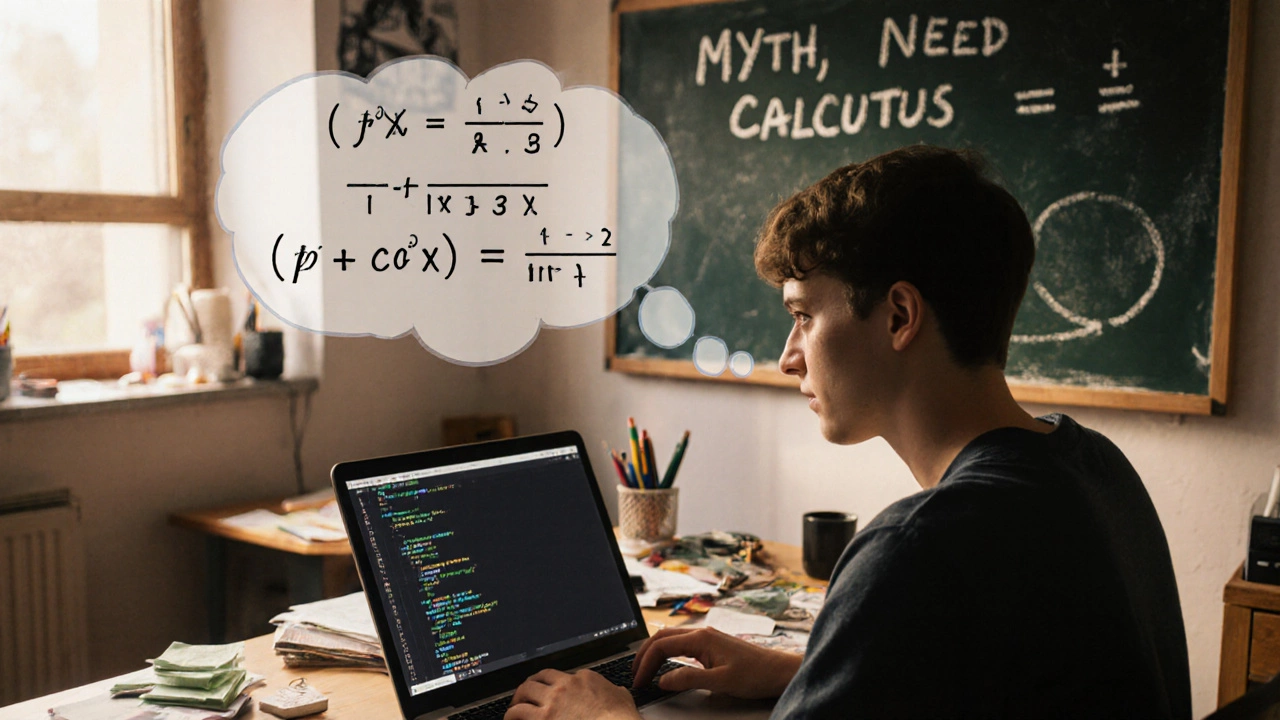
Does Coding Require Math? Myths, Facts, and How to Get Started
Explore if coding truly needs math, discover which fields demand specific concepts, and learn how to start programming with minimal math knowledge.
When working with learn coding without math, the practice of picking up programming skills while skipping heavy math concepts. Also known as math‑free coding, it opens doors for anyone who prefers logic over equations. This approach lets you focus on problem solving, creativity, and building functional apps without diving into calculus or linear algebra. Below we’ll break down why this works and what you need to get started.
One popular method is visual programming, a drag‑and‑drop style that replaces text code with colorful blocks. Visual programming learn coding without math by turning abstract logic into concrete actions you can see and move around. It pairs naturally with block‑based coding, a subset of visual programming where each block represents a single command or control structure. Because blocks are pre‑validated, you avoid syntax errors and can concentrate on flow, conditions, and loops—none of which demand advanced math.
Tools like Scratch, a free platform that lets you create games and animations with blocks or Blockly, Google’s library for embedding block editors in web pages embody this philosophy. They let you design interactive stories, simple simulations, and even basic AI prototypes without writing a single equation. For mobile developers, MIT App Inventor, a web‑based visual editor for Android apps adds sensors, databases, and UI components through blocks, making it easy to turn ideas into real apps.
Beyond hobbies, math‑free coding can lead to real‑world jobs. Many web‑design roles rely on HTML, CSS, and JavaScript basics where math is limited to pixel calculations—often handled automatically by frameworks. Game designers using engines like Unity or Unreal frequently start with visual scripting tools (Bolt, Blueprint) that let them build gameplay mechanics without touching trigonometry. Even data‑driven fields such as business intelligence offer drag‑and‑drop tools (Power BI, Tableau) that transform data into visuals with minimal math. The common thread is that visual or block‑based environments abstract the math layer, so you can focus on user experience and logic.
If you’re wondering how to structure your learning, start with a free account on Scratch or Blockly, follow a beginner tutorial, and build a simple project—like a quiz or a maze game. Then graduate to App Inventor to add real‑world device features like GPS or camera. Join communities on Reddit, Discord, or local maker groups to share projects and get feedback. Plenty of free courses on platforms like Coursera and edX walk you through visual programming fundamentals without math prerequisites. As you grow confident, explore hybrid tools that blend blocks with text code, giving you a smooth transition to languages like Python or JavaScript when you’re ready.
Now that you’ve seen the landscape—from visual programming and block‑based tools to career pathways and learning steps—take a look at the articles below. They dive deeper into specific platforms, compare online versus distance learning, explain coding best practices, and show how you can earn certificates fast. Whether you’re a student, a professional pivoting careers, or just curious, the collection offers actionable insights to help you master coding without the math barrier.

Explore if coding truly needs math, discover which fields demand specific concepts, and learn how to start programming with minimal math knowledge.